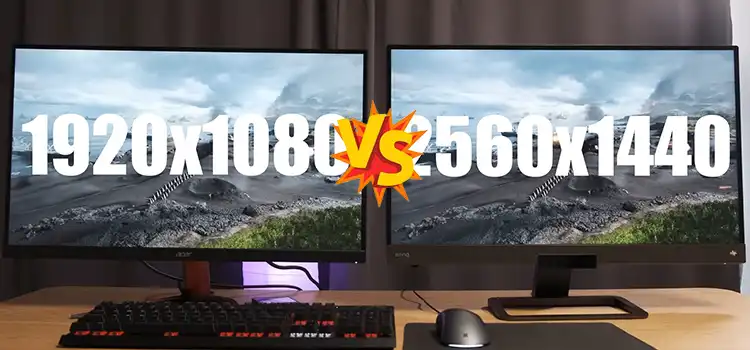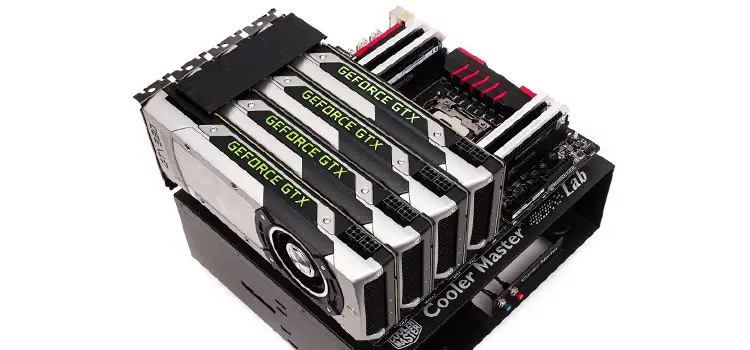Geforce GTX 1660 Ti for 1080p 144hz Monitor | Should I Get It?
If you can afford it, consider upgrading to a display with an adjustable refresh rate of 144Hz. When you purchase a VRR screen, you would be sure to take advantage of 144 fps gaming in videogames that support it, even when in games that do not support it, you will always be free to enjoy a pleasant experience thanks to the screen’s ability to adapt the clock speed to suit the refresh rate.
If you purchase a monitor with a 75Hz refresh rate, you will be limited to 75Hz gaming despite this 1660 ti is completely good enough to play numerous games including well above 75 frames per second at 1080p. Indeed, it’s able to operate a huge proportion of gaming platforms at frame rates of well around 75 frames per second in 1080p. That is only in modern and challenging AAA titles, as well as in poorly optimized videogames as well as games with quite a hard frame rate cap, that you will be limited to 60-75 frames per second.

Geforce GTX 1660 ti for 1080p 144hz Monitor
To put it another way, take the following two situations:
When you’re able to play video games at 75 frames per second, there will be no difference in the performance whether you’re using a 75Hz or even a 144Hz screen refresh rate display.
Since you’re able to operate the action at 90 frames per second, 100 frames per second, 120 frames per second, and 144 frames per second, the performance will be significantly improved if you have got a 144Hz high refresh rate display.
Shortly said, the performance with such a 144Hz refresh rate panel would never end up badly with such a 75Hz screen, and it will almost always be significantly better than it is to the latter. Invest in a 144Hz G-sync and perhaps Freesync display.
Although it is dependent on your display’s resolution, utilizing the 2K monitor means you will not be able to use 144hz. However, if you’re considering the 1080p monitor, it should be able to support the 144Hz refresh rate.
For anyone in this price range, you are searching for the very lowest GPU which will still allow you to run most videogames at 144hz (or nearer to it) along with a consistent basis. The Nvidia GTX 1660 is now the only graphics card I would suggest in this classification, and it is also the most expensive.
A welcome addition here to the Nvidia brand, the GTX 1660 succeeds the GTX 1060 however does not have any of the newer RTX hardware, such as visual effects or deep learning super sampling (DLSS). This GTX 1660 is just a high-performance GPU with exceptional power economy, representing the maximum of performance again for the Pascal system.
This GTX 1660 is indeed the least effective GPU you will choose for 1080p 144hz playing at this resolution. In recent applications or more demanding programs, you will most likely now have to drop the graphics options to keep an FPS around 144hz, however, in eSports publications or earlier games, you consider 1660 to run admirably even at average graphics settings, according to our expectations. As a result of its high performance, 1660 consumes almost no power as well as generates extremely less heat, making this a popular option for such a silent construction or for an ability to solely with components that are more closely packed together.
Because dual compressor AIB variants such as the GTX 1660 cost roughly around $220 (and therefore are sometimes even cheaper during sales), this GPU is an excellent option for affordable 1080p 144hz games.
If you move one step up from the super-duper tier as well as start searching for a GPU that will run well 1080p 144hz using moderate to high screen resolution in the rest of the matches, you will also have a couple of extra options to choose from. Team Green recommends the GTX 1660 Ti, which is the larger brother of 1660, which is a highly fascinating graphics card.
Each of these GPUs will deliver outstanding results at a fair price, and they will serve as a welcome major upgrade from the super-duper tier without spending a lot of money, respectively. The most noteworthy changes here between 2 are indeed the exchange involved in getting somewhat greater power (about 10%) first from 56 there at expense of large improved power demand, heating effect, and noises. No GPU will be able to sustain a steady frame rate of 144FPS throughout all games, however, both will produce a frame rate of well over 100FPS in practically all modern games and therefore will comfortably make 144FPS on eSports and otherwise older releases without using any of the minimum graphical settings.
Since the RX Vega 56 has been rolled out, prices depend according to where you buy it, making it difficult to compare prices. Most commonly, the budget range is between $320 and 330, including the RX 56 fan version available relatively closer at $310 on Amazon.com. In contrast, Gigabyte 1660 Ti is offered for $280 having a powerful companion model like the 1660 Ti.
Given the price disparity, I suggest the 1660 Ti, however, if you could somehow locate the RX Vega 56 at nearer to $300 and therefore don’t worry about the additional high – temperature as well as noise, it would provide greater performance and far more VRAM having a little jump to 1080p 144hz gameplay while maintaining the same pricing.
Conclusion
The 1660ti has the processing power to take advantage of a 144Hz panel with no problem. When it comes to individual games or even something like Witcher 3, high clock speeds aren’t always “necessary” – yet higher frames help for better motion in any game. Generally the type of Witcher as well as Metro with a few casual firearms thrown in for good measure? However, I believe that you would be satisfied with a beautiful screen rather than one having a higher refresh rate, however, this is mostly dependent on your money what’s available at a certain price range.
Subscribe to our newsletter
& plug into
the world of PC Hardwares

![[7 Fixes] Graphics Card Not Turning On](https://www.hardwarecentric.com/wp-content/uploads/2023/09/Graphics-Card-Not-Turning-On.webp)

![[Explained] Can 4k Monitor Downscaled to 1440p?](https://www.hardwarecentric.com/wp-content/uploads/2023/02/Can-4k-Monitor-Downscaled-to-1440p.webp)
![[4 Fixes] 144hz Monitor Won’t Run at 144Hz](https://www.hardwarecentric.com/wp-content/uploads/2021/10/144hz-monitor-wont-run-at-144hz.jpg)

